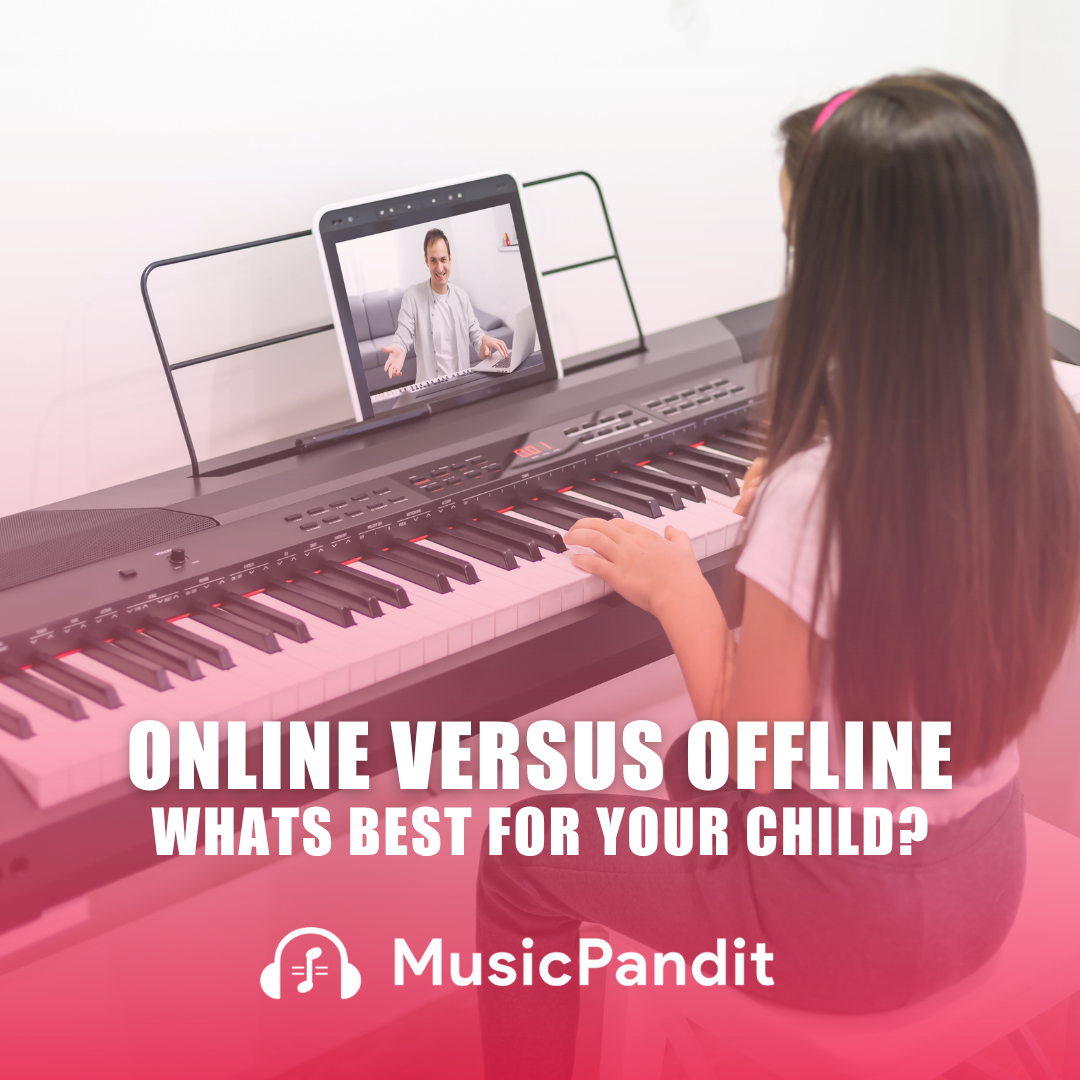Music education offers numerous benefits, including cognitive development, emotional expression, and cultural appreciation. However, dedicating time solely to music can lead to the neglect of other vital activities such as academics, sports, and social engagements.
Achieving a balance allows children to enjoy a diverse range of experiences, promoting overall well-being and preventing burnout.
Related read: How Can I Make Practicing Scales More Interesting?
Assessing Current Commitments
Parents, before integrating music education into an already busy schedule, it’s essential to evaluate existing commitments:
- Academic Responsibilities: Ensure that educational obligations are met and that music practice does not interfere with study time.
- Extracurricular Activities: Consider other interests such as sports, clubs, or hobbies that require time and energy.
- Family and Social Time: Maintain quality time with family and friends to support emotional health.
By understanding current commitments, it’s easier to identify available time slots for music practice without causing conflicts.
Creating a Structured Schedule
Developing a structured schedule is crucial for balancing music education with other activities. A well-organized plan ensures that each commitment receives adequate attention.
Steps to Create an Effective Schedule:
- List All Activities: Write down all current commitments, including school, homework, extracurriculars, chores, and leisure activities.
- Identify Priorities: Determine which activities are most important and non-negotiable.
- Allocate Time Blocks: Assign specific time slots for each activity, ensuring that high-priority tasks receive sufficient attention.
- Include Buffer Periods: Allow for short breaks between activities to prevent fatigue and maintain productivity.
- Be Flexible: Understand that schedules may need adjustments due to unforeseen events or changing priorities.
By following these steps, individuals can create a balanced routine that accommodates music education alongside other essential activities.
Encouraging Efficient Practice Techniques
So, if your child has already enrolled for music classes then maximizing the effectiveness of practice sessions will ensure progress without requiring excessive time. Efficient practice techniques can lead to significant improvements, even within limited time frames.
Tips for Efficient Practice:
- Set Specific Goals: Sit down with your child and help them define clear objectives for each practice session to maintain focus and direction.
- Use a Timer: They should allocate specific durations for different practice elements, such as scales, repertoire, and sight-reading.
- Eliminate Distractions: Create a dedicated practice space for them free from interruptions to enhance concentration.
- Reflect and Adjust: After each session, you and your child can assess what worked well and what needs improvement, adjusting future practices accordingly.
Implementing these strategies can lead to more productive practice sessions, allowing for musical advancement without monopolizing time.
Integrating Music with Other Subjects
Finding intersections between music and other areas of life can enrich learning experiences and create a more cohesive schedule.
Creative Examples of Integration:
- Academic Subjects: Explore the historical context of musical pieces to connect with history lessons or analyze song lyrics to enhance language skills.
- Physical Activities: Combine music with physical exercise, such as dancing or marching, to promote physical health while engaging with music.
- Social Studies: Study the cultural origins of different musical genres to gain a deeper understanding of global cultures.
Integrating music with other subjects not only reinforces learning but also makes the educational process more dynamic and engaging.
Encouraging Open Communication
Maintaining open lines of communication between parents, educators, and students is vital for achieving balance.
Strategies for Effective Communication:
- Regular Check-Ins: Schedule consistent meetings to discuss progress, challenges, and any necessary adjustments to the schedule.
- Collaborative Decision-Making: Involve all parties in decisions regarding scheduling and prioritization to ensure mutual agreement and understanding.
- Feedback Mechanisms: Establish channels for providing and receiving feedback to facilitate continuous improvement.
Open communication fosters a supportive environment where children feel heard and valued, contributing to a more balanced approach to music education.
Recognizing the Signs of Overcommitment
It’s essential to be vigilant for signs that a child may be overextended, as this can lead to stress and diminished performance across activities.
Warning Signs:
- Chronic Fatigue: Persistent tiredness despite adequate rest.
- Declining Performance: Notable drops in academic, musical, or other activity-related performance.
- Increased Irritability: Heightened sensitivity or frustration over minor issues.
- Loss of Interest: Diminished enthusiasm for activities that were once enjoyable.
If these signs are present, it may be necessary to reassess the current schedule and make adjustments to reduce the load, ensuring a healthier balance.
Fostering a Supportive Environment
This is an important aspect in your child’s musical journey. Creating an environment that supports both music education and other activities is crucial for sustained success.
Ways to Foster Support:
- Celebrate Achievements: Parents, acknowledge and celebrate milestones in all areas, not just music.
- Provide Resources: You should ensure access to necessary materials and support for all activities.
- Encourage Downtime: You will also need to promote the importance of rest and leisure to prevent burnout. Allocate time for unstructured activities where children can relax, recharge, and engage in hobbies that aren’t task-oriented. Having downtime creates mental clarity, improves creativity, and keeps individuals motivated.
Support Emotional Well-being
Balancing multiple activities can sometimes feel overwhelming. As a parent or guardian, be a source of encouragement and positivity. Regularly check in on how your child feels about their schedule. Celebrate small wins, whether it’s mastering a tricky chord or acing a math test, to show that all efforts are valued.
Managing Transitions Between Activities
We always want the best for our children and provide things that will enable their overall development. However, one of the challenges that we often see is the need of juggling music education with other commitments or between different tasks. For instance, shifting from school assignments to music practice or from sports practice to rehearsal. This can be mentally taxing. Here are a few things that you can do for a smooth transition between the activities.
Tips for Smooth Transitions:
- Set Transition Cues: Use physical or environmental cues, such as a change in location or a specific sound (e.g., a timer), to signal the start of a new activity.
- Prepare Materials in Advance: Ensure that all materials, like sheet music, instruments, or homework, are ready to avoid delays.
- Mindful Breaks: Encourage short relaxation techniques, such as deep breathing or stretching, between activities to refresh the mind and body.
Managing transitions effectively can reduce stress and create a sense of flow in daily routines.
Also read: Singing Education’s Future Trends and Innovations
The Role of Technology in Streamlining Schedules
Today, technology can be a powerful ally in managing time and balancing music education with other responsibilities.
Tech Solutions to Explore:
- Scheduling Apps: Use apps like Google Calendar or family organization tools like Cozi to plan and share schedules.
- Online Music Resources: Leverage online tutorials, metronomes, and sheet music platforms to enhance learning efficiency.
- Video Lessons: Enroll in online music classes that allow flexibility in lesson times, such as the Music Pandit platform, which tailors lessons to individual schedules.
Integrating technology reduces logistical challenges and ensures that learning happens seamlessly alongside other commitments.
Involving the Whole Family
When the whole family is involved in supporting music education, balancing activities becomes a shared effort rather than an individual challenge.
Ways Families Can Contribute:
- Create a Family Music Night: Dedicate one evening a week to musical performances or learning together as a family.
- Help with Practice: Siblings or parents can play supportive roles, such as clapping along to rhythms or assisting with memorization.
- Adjust Household Schedules: Be flexible with chores or meal times to accommodate music practice.
When music becomes a family effort, it feels less like a task and more like a collective joy.
Teaching Time Management Skills
For children especially, learning time management early is an invaluable life skill. Music education offers a unique opportunity to teach these skills.
How to Teach Time Management Through Music
- Practice Logs: Encourage your child to maintain a log of their practice sessions to track time and progress.
- Prioritize Tasks: Teach them to start with challenging pieces first, then move to simpler ones, mirroring the concept of tackling priorities in life.
- Set Realistic Goals: Encourage setting small, achievable goals for each week instead of overwhelming long-term ones.
These skills can extend to other areas, such as academics, sports, and social responsibilities.
Balancing Passion with Flexibility
One key to successful balance is recognizing that interests evolve over time. While music education might be a primary focus now, other activities may take precedence in the future, and that’s okay.
Encourage adaptability in your child’s routine, allowing them to explore other passions without abandoning music altogether. Flexible commitments, such as seasonal music workshops or shorter, goal-oriented courses, can help keep their musical journey alive without becoming overbearing.
The Benefits of Striking the Right Balance
When music education is effectively balanced with other activities, the rewards are immense:
- Well-Rounded Growth: A diverse range of activities fosters cognitive, physical, and emotional development.
- Increased Productivity: Balanced schedules prevent burnout, enabling children and adults to perform better in all areas.
- Sustained Interest: A less stressful schedule ensures that music remains a source of joy rather than a burden.
For parents, it’s a chance to witness their child thrive across multiple domains, developing into a versatile and well-rounded individual.
Conclusion
Balancing music education with other activities is not just a logistical task—it’s an art. Yes we said that!
By creating structured schedules, fostering open communication, and providing emotional support, parents can ensure a harmonious integration of music into everyday life. Remember that flexibility, patience, and encouragement are key to helping children and music enthusiasts succeed in their musical journey while excelling in other aspects of life.
As parents, educators, and enthusiasts, let’s embrace the challenge of finding this balance. It’s not about doing everything perfectly but about creating an environment where learning, joy, and growth coexist beautifully.














